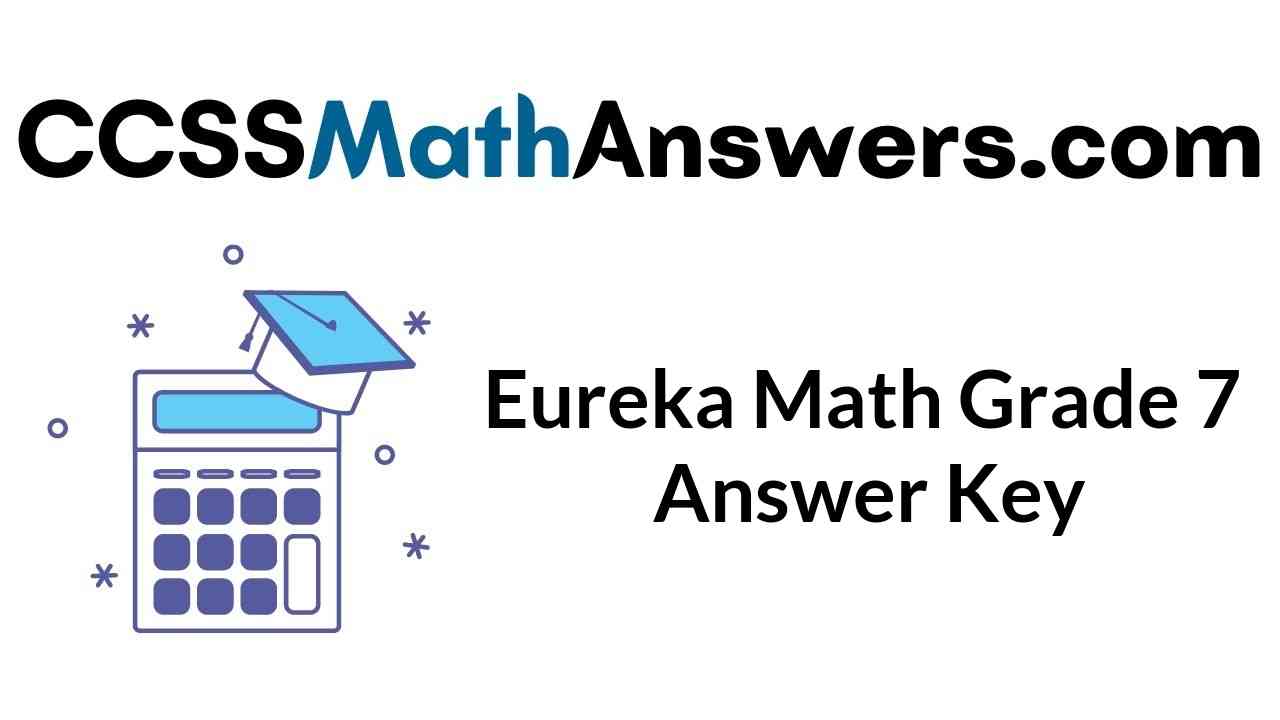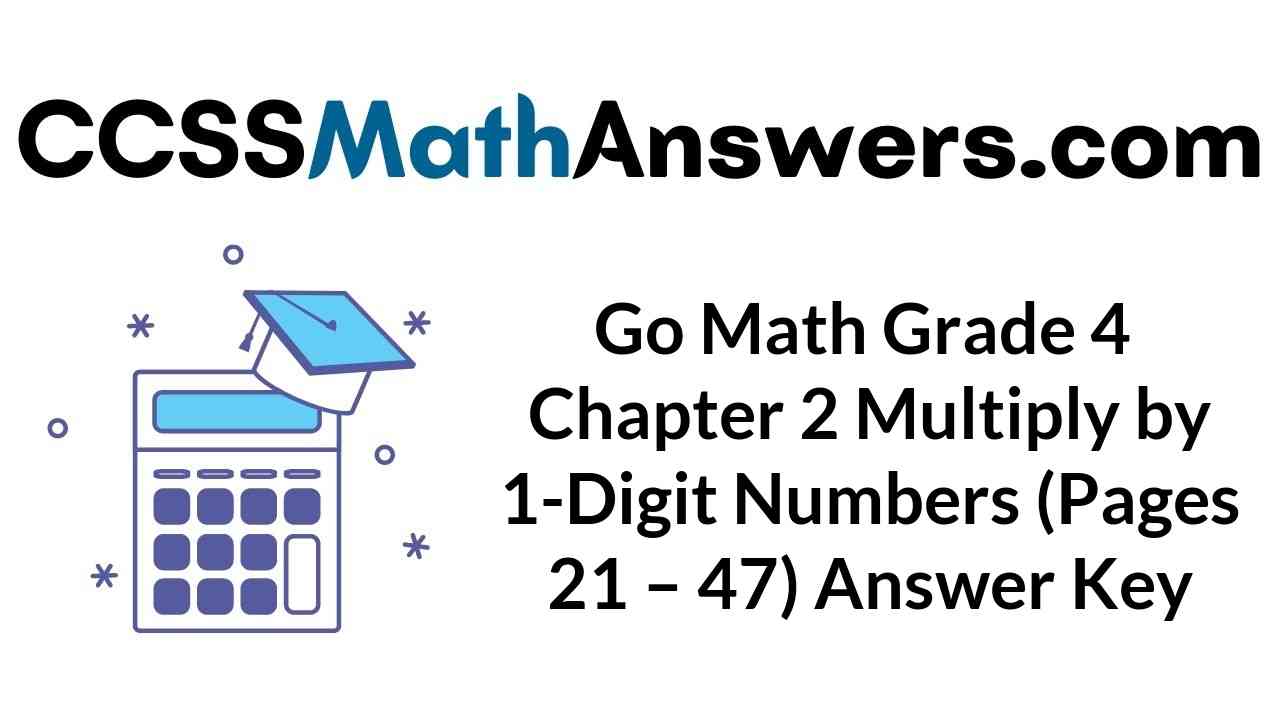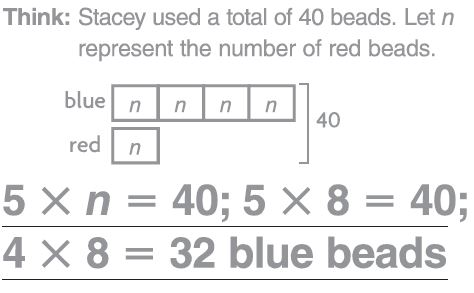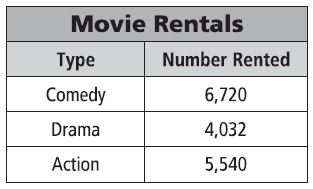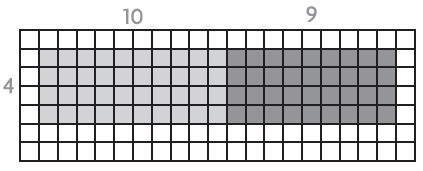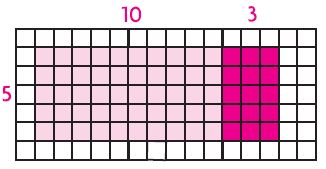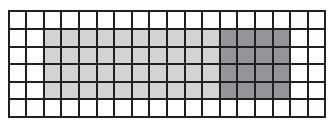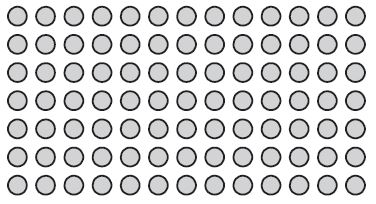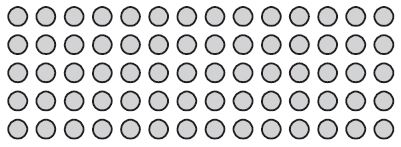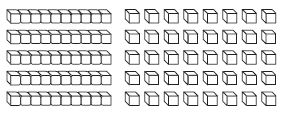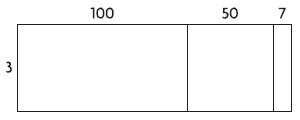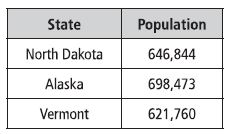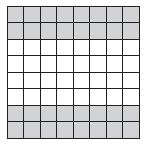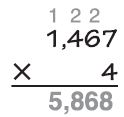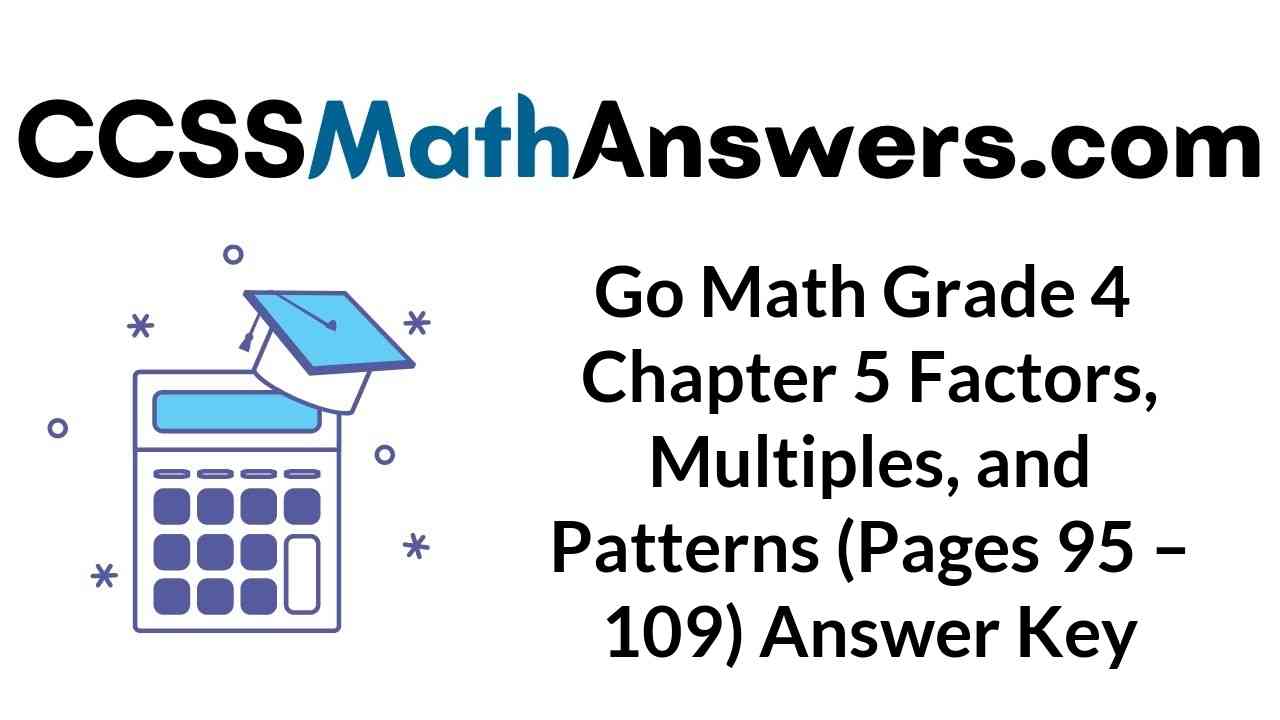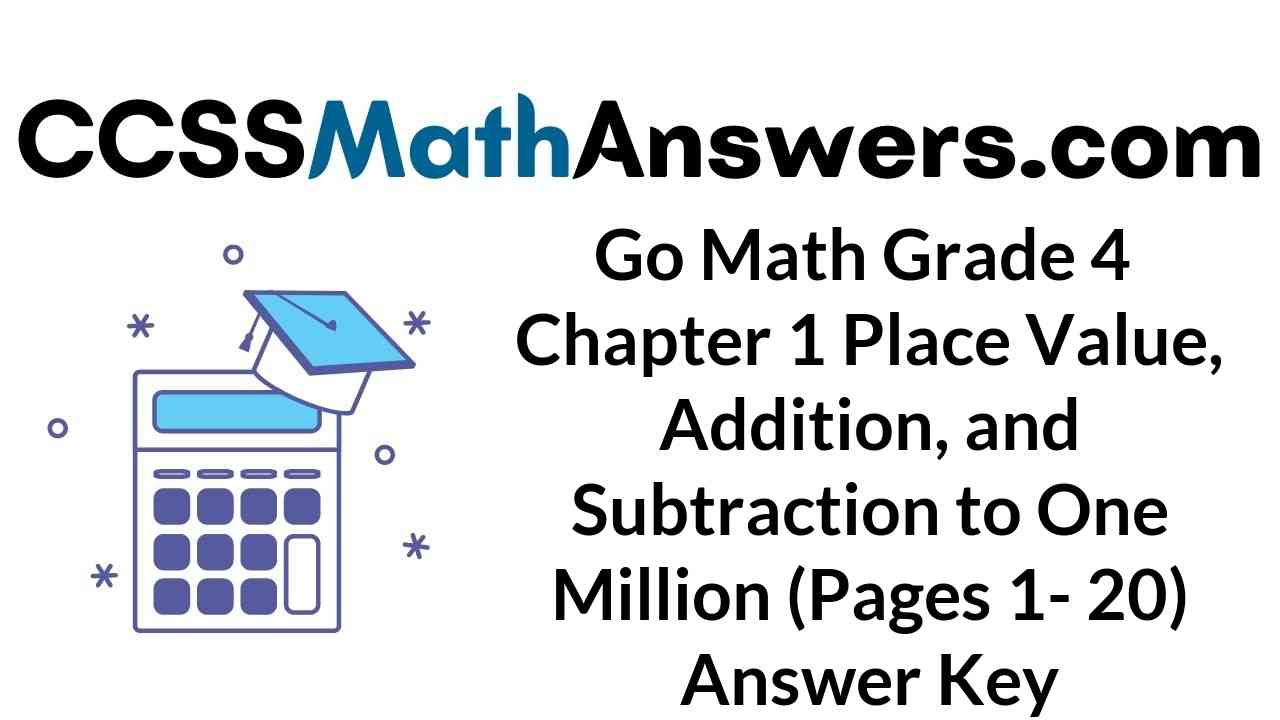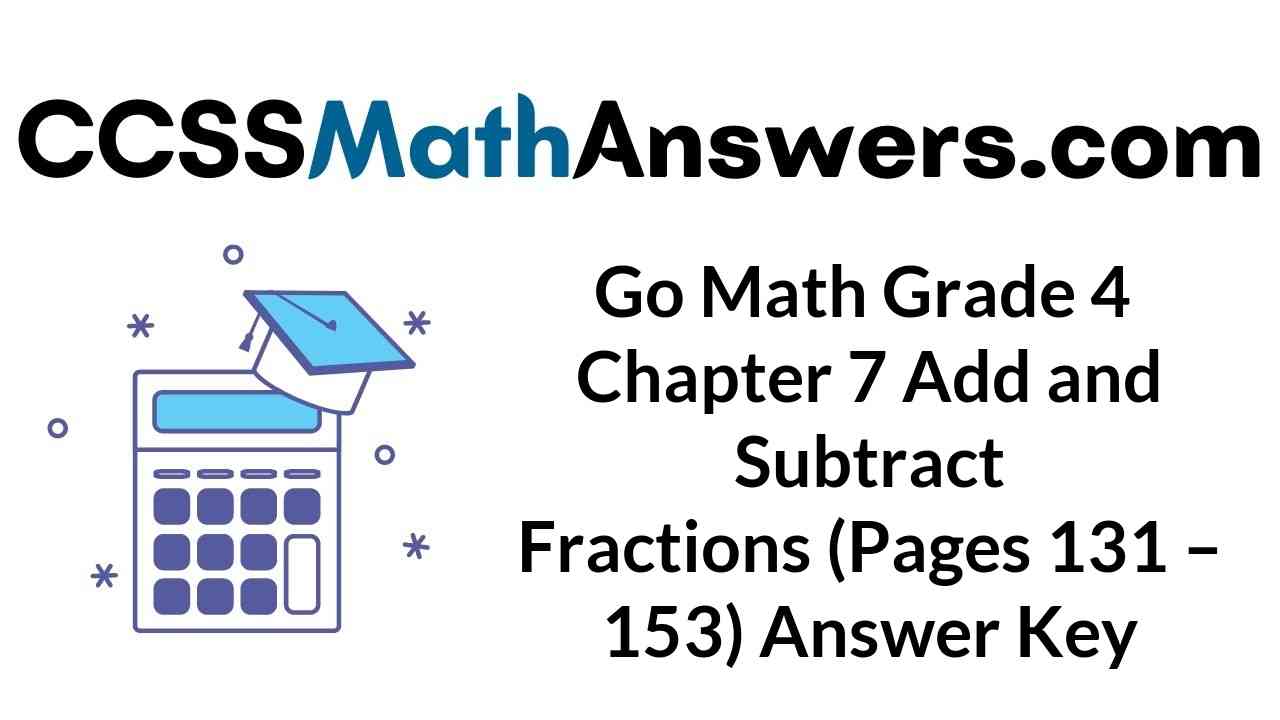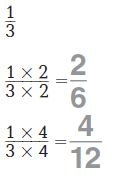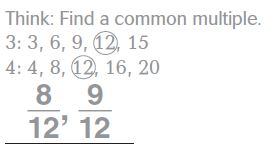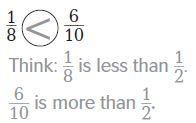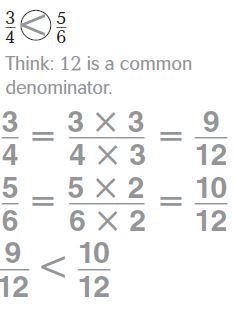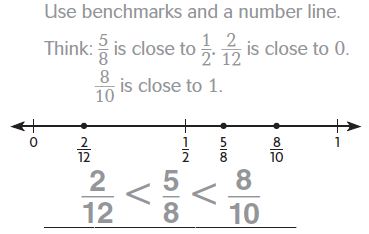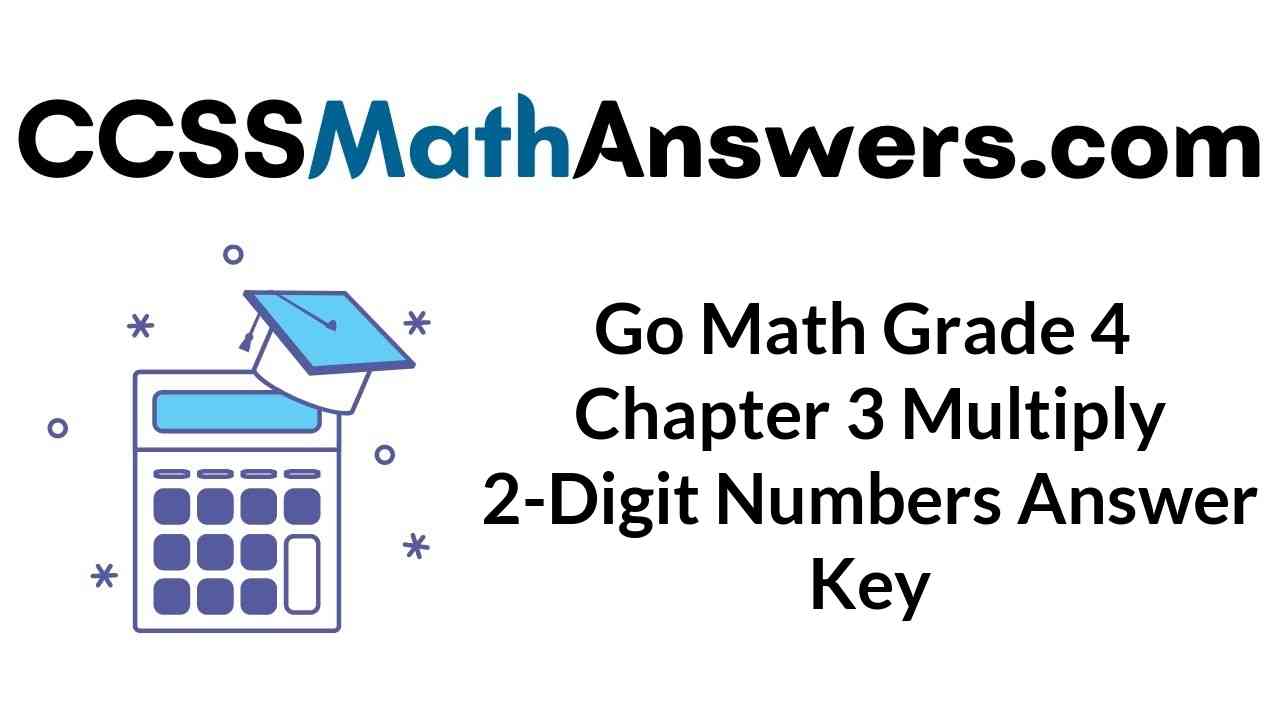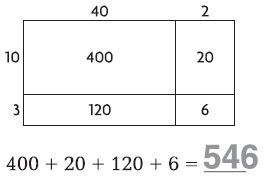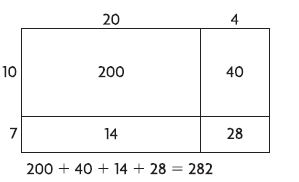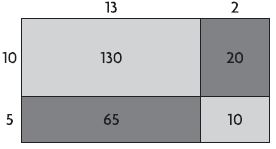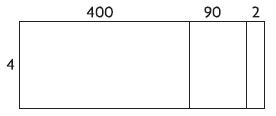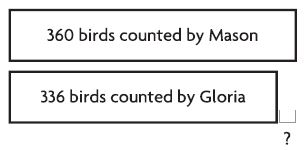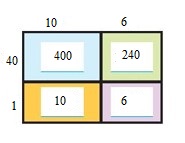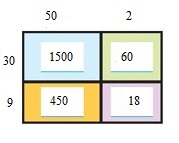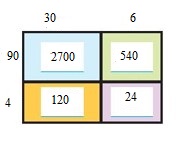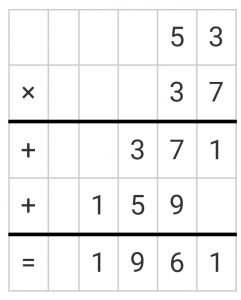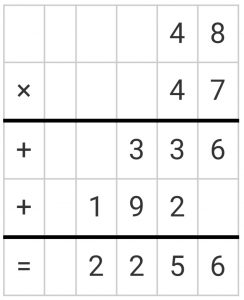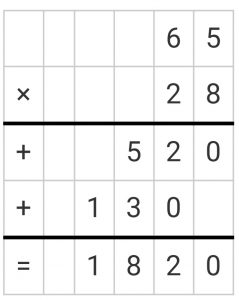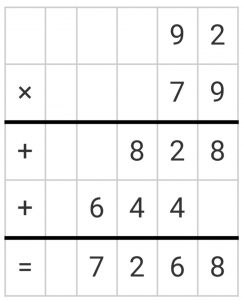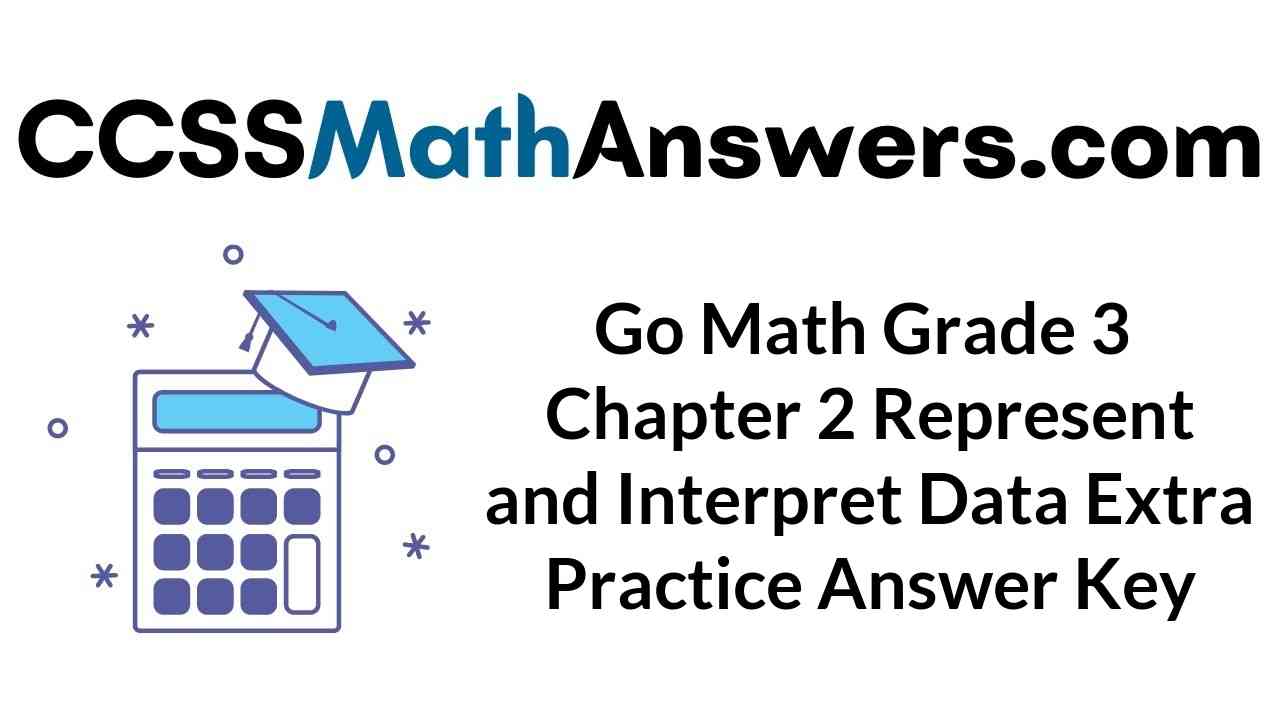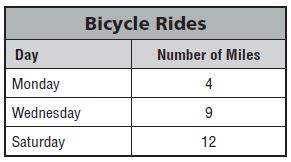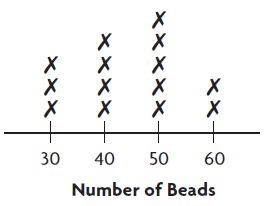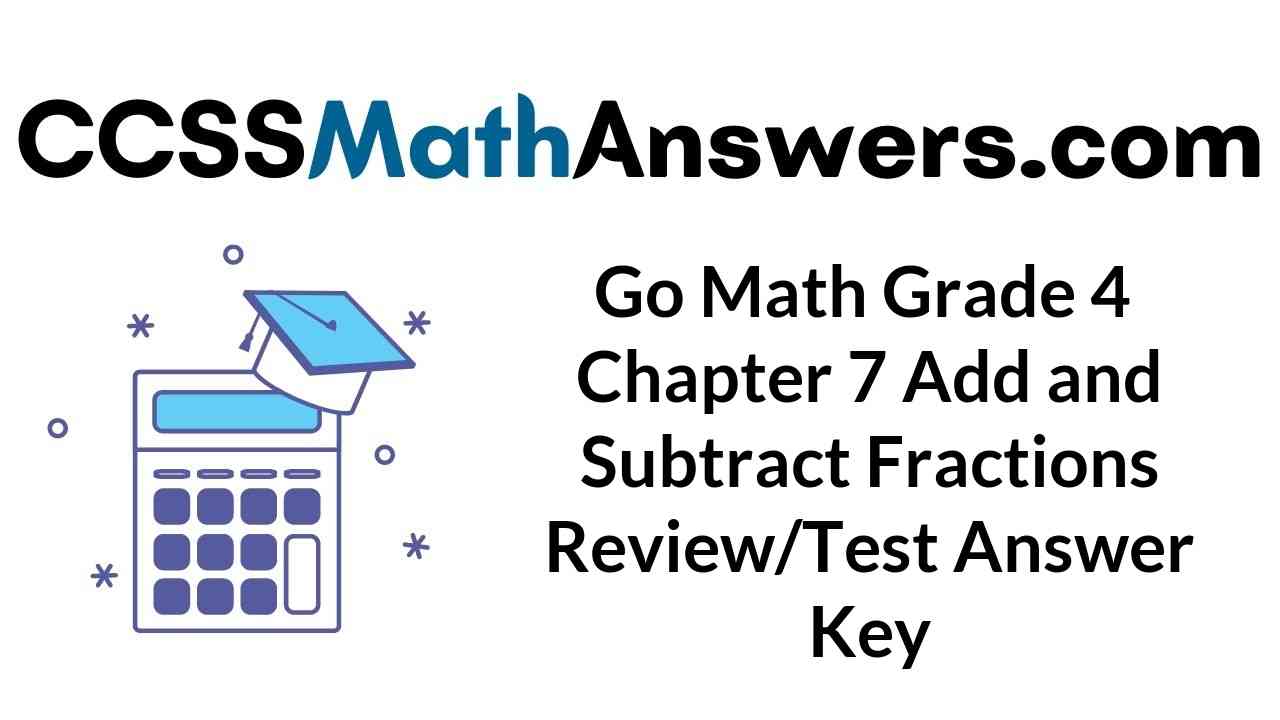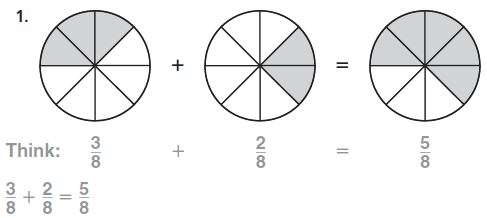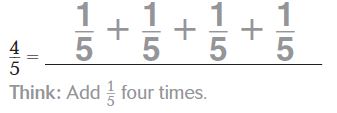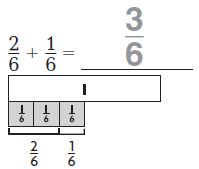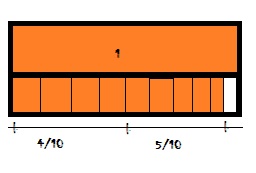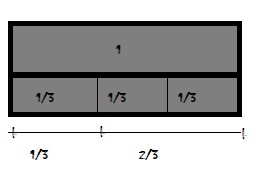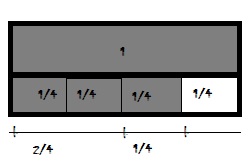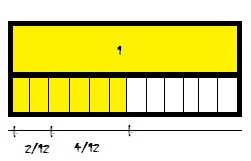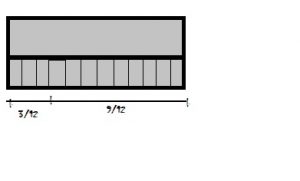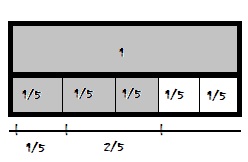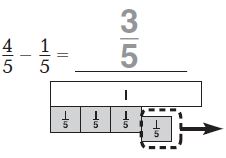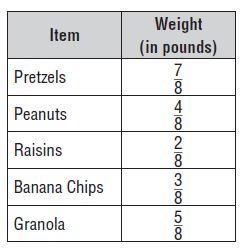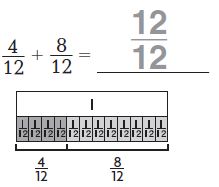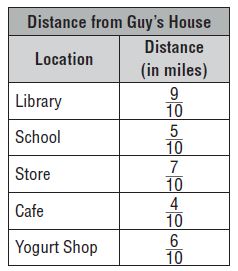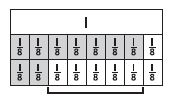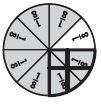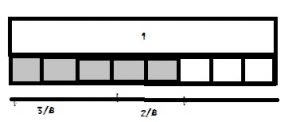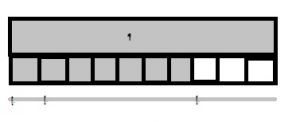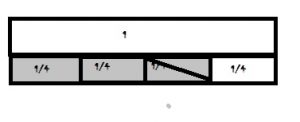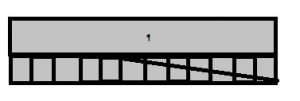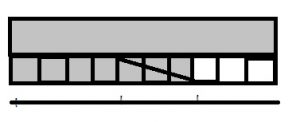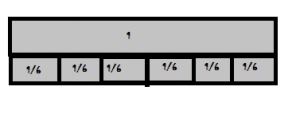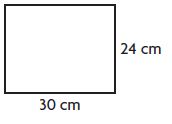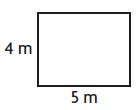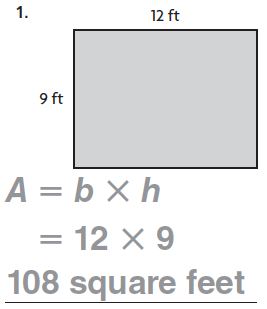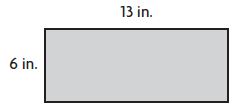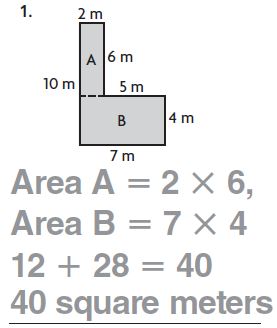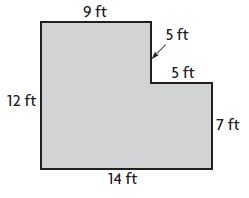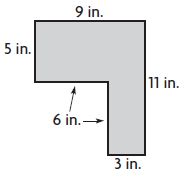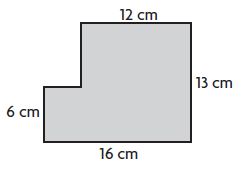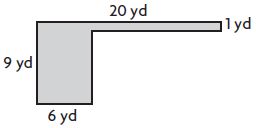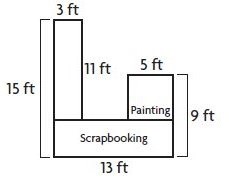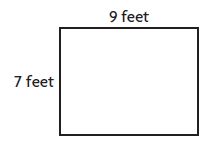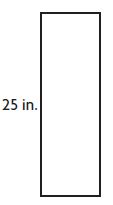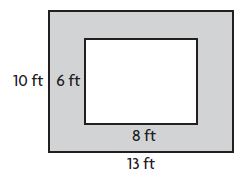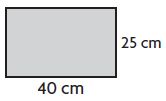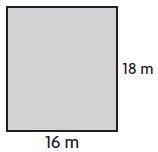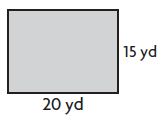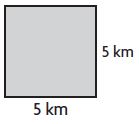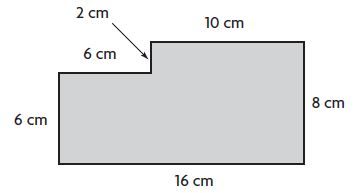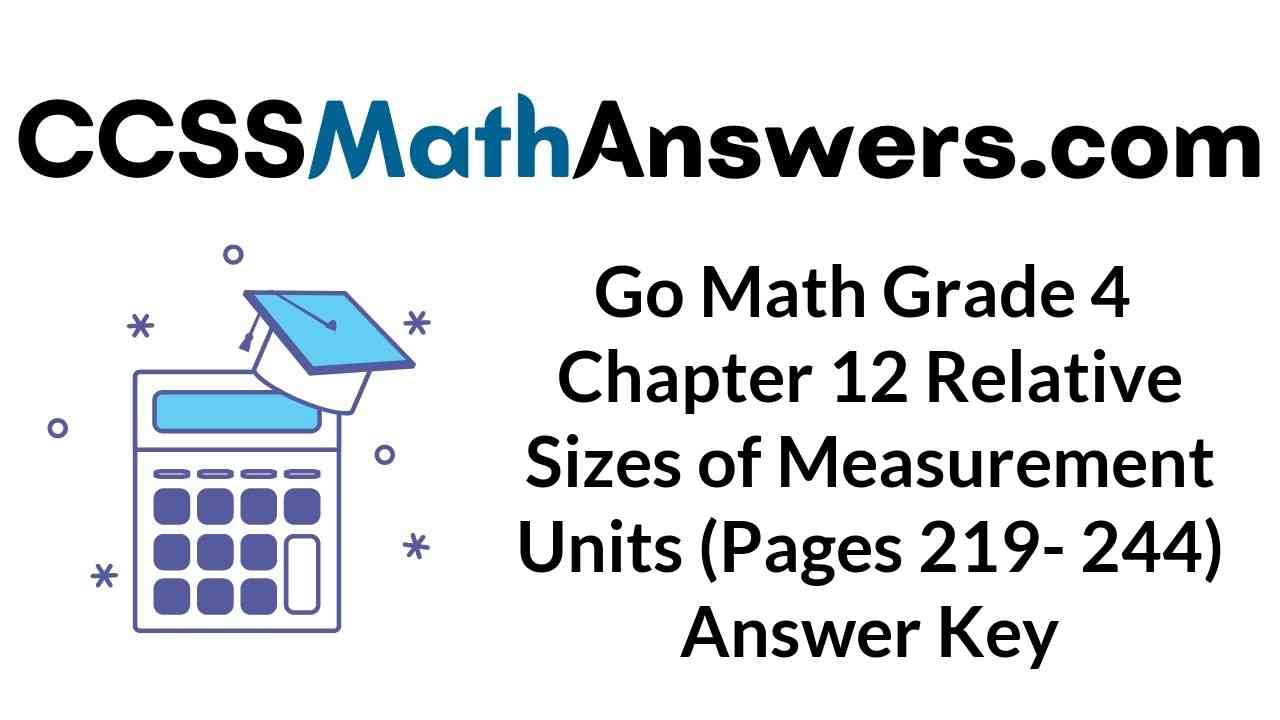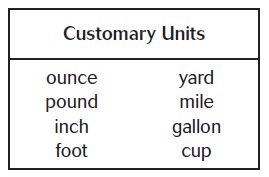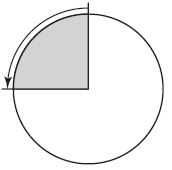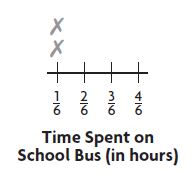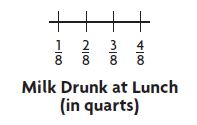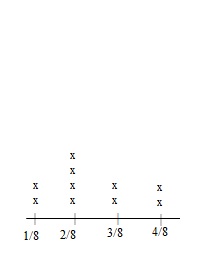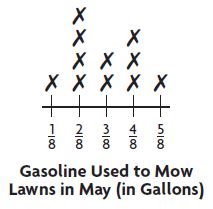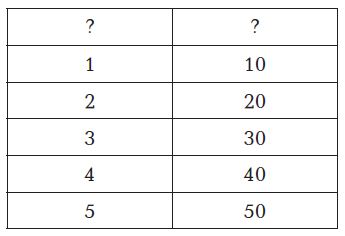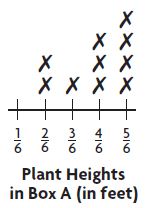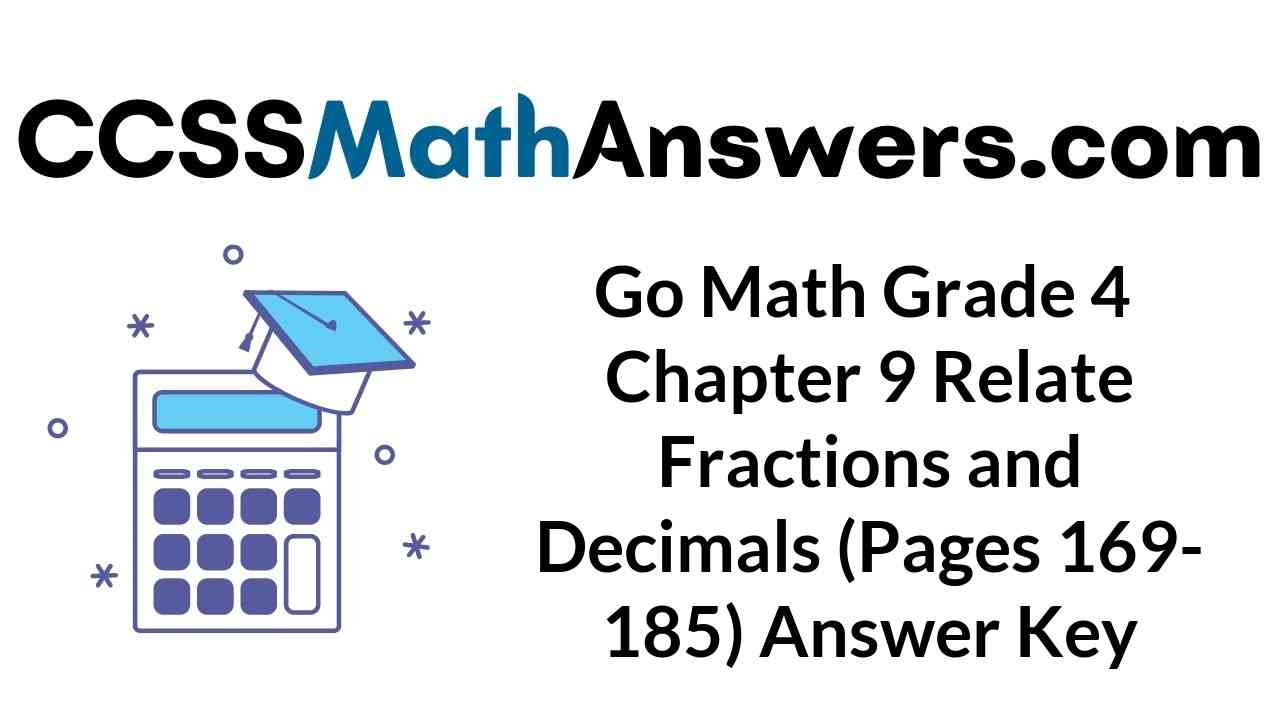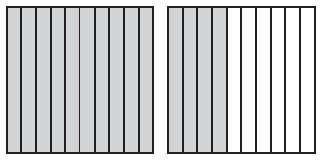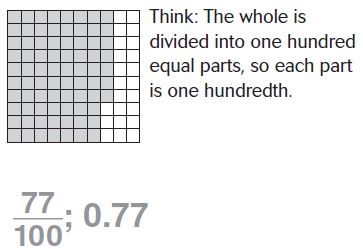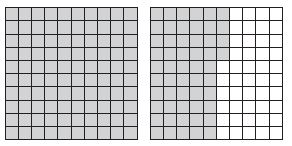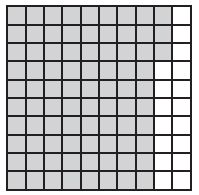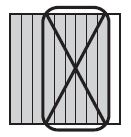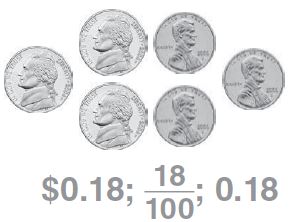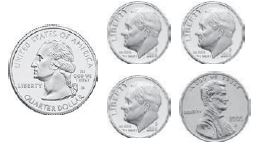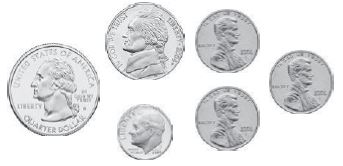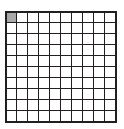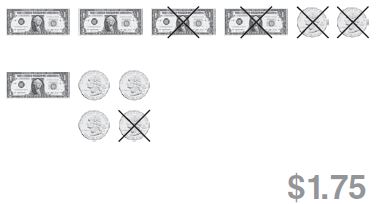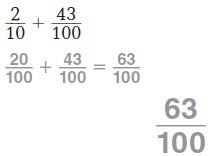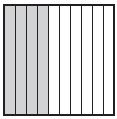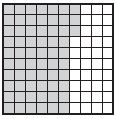Go Math Grade 4 Answer Key Homework Practice FL Chapter 1 Place Value, Addition, and Subtraction to One Million Pdf Download is available on this page for an efficient practice session. Provided solutions are very easy to understand and simple to learn the concept of Chapter 1 Place Value, Addition, and Subtraction to One Million. Enhance your kid’s logical and analytical thinking by answering every practice question covered in the HMH Go Math Grade 4 Answer Key Homework Practice FL Chapter 1 Place Value, Addition, and Subtraction to One Million.
Go Math Grade 4 Answer Key Homework Practice FL Chapter 1 Place Value, Addition, and Subtraction to One Million
Here, we have designed a new path for students to solve each and every chapter question & improve their problem-solving skills. It is nothing but the HMH Go Math Grade 4 Answer Key of Chapter 1. The topics of ch 1 Place Value, Addition, and Subtraction to One Million are Model Place Value Relationships, Compare and Order Numbers, Round Numbers, Add and subtract Whole Numbers, etc. Now, you’ll find all topics Go Math Grade 4 Answer Key Homework Practice FL Chapter 1 for better preparation.
Lesson: 1 – Model Place Value Relationships
Lesson: 2 – Read and Write Numbers
Lesson: 3 – Compare and Order Numbers
Lesson: 4 – Round Numbers
Lesson: 5 – Rename Numbers
Lesson: 6 – Add Whole Numbers
Lesson: 7 – Subtract Whole Numbers
Lesson: 8 – Problem Solving Comparison Problems with Addition and Subtraction
Lesson: 9
Common Core – Place Value, Addition, and Subtraction to One Million – Page No. 3
Model Place Value Relationships
Find the value of the underlined digit.
Question 1.
6,035
30
Question 2.
43,782
________
Answer: 700
Explanation:
Every digit in a number has a place value and the place value can be defined as the value represented by a digit in a number on the basis of its position in the number. So the place value of the digit 7 in 43,782 is 700.
Question 3.
506,087
________
Answer: 7
Explanation:
Every digit in a number has a place value and the place value can be defined as the value represented by a digit in a number on the basis of its position in the number. So the place value of the digit 7 in 506,087 is 7.
Question 4.
49,254
________
Answer: 9000
Explanation:
Every digit in a number has a place value and the place value can be defined as the value represented by a digit in a number on the basis of its position in the number. So the place value of the digit 9 in 49,254 is 9000.
Question 5.
136,422
________
Answer: 30,000
Explanation:
Every digit in a number has a place value and the place value can be defined as the value represented by a digit in a number on the basis of its position in the number. So the place value of the digit 3 in 136,422 is 30,000.
Question 6.
673,512
________
Answer: 500
Explanation:
Every digit in a number has a place value and the place value can be defined as the value represented by a digit in a number on the basis of its position in the number. So the place value of the digit 5 in 673,512 is 500.
Question 7.
814,295
________
Answer: 800,000
Explanation:
Every digit in a number has a place value and the place value can be defined as the value represented by a digit in a number on the basis of its position in the number. So the place value of the digit 8 in 814,295 is 800,000.
Question 8.
736,144
________
Answer: 6,000
Explanation:
Every digit in a number has a place value and the place value can be defined as the value represented by a digit in a number on the basis of its position in the number. So the place value of the digit 6 in 736,144 is 6,000.
Compare the values of the underlined digits.
Question 9.
6,300 and 530
The value of 3 in _____ is _____ times the value of 3 in _____.
Answer: The value of 3 in 6,300 is 10 times the value of 3 in 530.
Explanation:
Every digit in a number has a place value and the place value can be defined as the value represented by a digit in a number on the basis of its position in the number. So the place value of the digit 3 in 6,300 is 300. And the place value of the digit 3 in 530 is 30. As each hundred is 10 times as many as 10, so 3 hundreds are ten times as many as 3 tens. So, the value of 3 in 6,300 is 10 times the value of 3 in 530.
Question 10.
2,783 and 7,283
The value of 2 in _____ is _____ times the value of 2 in _____.
Answer: The value of 2 in 2783 is 10 times the value of 2 in 7283.
Explanation:
Every digit in a number has a place value and the place value can be defined as the value represented by a digit in a number on the basis of its position in the number. So the place value of the digit 2 in 2,783 is 2000. And the place value of the digit 2 in 7,283 is 200. As each hundred is 10 times as many as 10, so 2 thousands are ten times as many as 2 hundred. So, the value of 2 in 2783 is 10 times the value of 2 in 7283.
Question 11.
34,258 and 47,163
The value of 4 in _____ is _____ times the value of 4 in _____.
Answer: The value of 4 in 47,163 is 10 times the value of 4 in 34,258.
Explanation:
Every digit in a number has a place value and the place value can be defined as the value represented by a digit in a number on the basis of its position in the number. So the place value of the digit 4 in 34,258 is 4,000. And the place value of the digit 4 in 47,163 is 40,000. As each hundred is 10 times as many as 10, so 4 thousands are ten times as many as 4 thousand tens. So, the value of 4 in 47,163 is 10 times the value of 4 in 34,258.
Question 12.
503,497 and 26,475
The value of 7 in _____ is _____ times the value of 7 in _____.
Answer: The value of 7 in 26,475 is 10 times the value of 7 in 5,03,497.
Explanation:
Every digit in a number has a place value and the place value can be defined as the value represented by a digit in a number on the basis of its position in the number. So the place value of the digit 7 in 503,497 is 7. And the place value of the digit 7 in 26,475 is 70. As each hundred is 10 times as many as 10, so 7 are ten times as many as 7 tens. So, the value of 7 in 26,475 is 10 times the value of 7 in 5,03,497.
Problem Solving
Use the table for 13–14.

Question 13.
What is the value of the digit 9 in the attendance at the Redskins vs. Titans game?
The value of 9 is _____
Answer: 9,000
Explanation:
Every digit in a number has a place value and the place value can be defined as the value represented by a digit in a number on the basis of its position in the number. So the place value of the digit 9 in 69,143 is 9,000.
Question 14.
The attendance at which game has a 7 in the ten thousands place?
__________
Answer: Ravens vs. Panthers
Explanation:
Each digit of the number holds its own value. The adjacent digits of the number differ from each other by 10 times. Starting from the leftmost digit going to the right, the order of place values starts from ones, tens, hundreds, thousands, and ten thousand. Therefore, the number should contain a digit 7 on the 5th digit from left to right.
Thus the attendance at Ravens vs. Panthers game has a 7 in the ten thousands place.
Question 15.
How does a digit in the ten thousands place compare to a digit in the thousands place?
Type below:
__________
Answer:
A digit in the ten thousand place has a value of 10,000 times the value of the mere digit. While a digit in the thousands place has a value 1,000 times the value of the digit. So to compare you can do 10,000 / 1,000 = 10, which means that a digit in the ten thousand place values ten times what the same digit values are it is the thousand place.
Common Core – Place Value, Addition, and Subtraction to One Million – Page No. 4
Lesson Check
Question 1.
During one season, a total of 453,193 people attended a baseball team’s games. What is the value of the digit 5 in the number of people?
Options:
a. 500
b. 5,000
c. 50,000
d. 500,000
Answer: 50,000
Explanation:
Given,
During one season, a total of 453,193 people attended a baseball team’s games.
Every digit in a number has a place value and the place value can be defined as the value represented by a digit in a number on the basis of its position in the number. So the place value of the digit 5 in 453,193 is 50,000.
Thus the correct answer is option C.
Question 2.
Hal forgot the number of people at the basketball game. He does remember that the number had a 3 in the tens place. Which number could Hal be thinking of?
Options:
a. 7,321
b. 3,172
c. 2,713
d. 1,237
Answer: 1,237
Explanation:
Given,
Hal forgot the number of people at the basketball game.
He does remember that the number had a 3 in the tens place.
a. 7,321 – the value of 3 in 7321 is 300.
b. 3,172 – the value of 3 in 3172 is 3000.
c. 2,713 – the value of 3 in 2713 is 3.
d. 1,237 – the value of 3 in 1237 is 30.
Thus the number 3 in tens place is 1,237.
Therefore, the correct answer is option D.
Spiral Review
Question 3.
Hot dog buns come in packages of 8. For the school picnic, Mr. Spencer bought 30 packages of hot dog buns. How many hot dog buns did he buy?
Options:
a. 24
b. 38
c. 110
d. 240
Answer: 240
Explanation:
Given,
Hot dog buns come in packages of 8.
For the school picnic, Mr. Spencer bought 30 packages of hot dog buns.
8 × 30 = 240 buns
He bought 240 hot dig buns.
Thus the correct answer is option D.
Question 4.
There are 8 students on the minibus. Five of the students are boys. What fraction of the students are boys?
Options:
a. \(\frac{3}{8}\)
b. \(\frac{5}{8}\)
c. \(\frac{5}{5}\)
d. \(\frac{8}{8}\)
Answer: \(\frac{5}{8}\)
Explanation:
There are 8 students on the minibus. Five of the students are boys.
Divide the number of boys by the total number of students on the minibus.
\(\frac{5}{8}\)
Thus the correct answer is option B.
Question 5.
The clock below shows the time when Amber leaves home for school. At what time does Amber leave home?
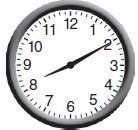
Options:
a. 2:41
b. 8:02
c. 8:10
d. 8:20
Answer: 8:10
Explanation:
By seeing the above figure we can say that Amber leave home is 8:10.
Thus the correct answer is option C.
Question 6.
Jeremy drew a polygon with four right angles and four sides with the same length.

What kind of polygon did Jeremy draw?
Options:
a. hexagon
b. square
c. trapezoid
d. triangle
Answer: square
Explanation:
A square has two pairs of parallel sides, four right angles, and all four sides are equal.
Thus the correct answer is option B.
Common Core – Place Value, Addition, and Subtraction to One Million – Page No. 5
Read and Write Numbers
Read and write the number in two other forms.
Question 1.
six hundred ninety-two thousand, four
standard form: 692,004;
expanded form: 600,000 + 90,000 + 2,000 + 4
Question 2.
314,207
Type below:
________
Answer:
Standard form: Three hundred fourteen thousand, two hundred seven.
Explanded form: 300,000 + 10,000 + 4,000 + 200 + 7
Question 3.
600,000 + 80,000 + 10
Type below:
________
Answer:
Standard form: 680,010
Expanded form: Six hundred eighty thousand ten.
Use the number 913,256.
Question 4.
Write the name of the period that has the digits 913.
________
Answer: thousands
Each group of three digits forms a period. The name of the period that has the digits 913 is thousands group.
Question 5.
Write the digit in the ten thousands place.
________
Answer: 1
Question 6.
Write the value of the digit 9.
________
Answer: 9 hundred thousands or 900,000.
Problem Solving
Use the table for 7 and 8.

Question 7.
Which state had a population of eight hundred four thousand, one hundred ninety-four?
________
Answer: South Dakota
Explanation:
The standard form of eight hundred four thousand, one hundred ninety-four is 804,194.
We can see the population 804,194 in the above table in South Dakota.
Question 8.
What is the value of the digit 8 in Alaska’s population?
________
Answer: 8 ten thousands, or 80,000.
Explanation:
The population in Alaska is 686,293.
The value of the digit 8 in Alaska’s population is 80,000.
Common Core – Place Value, Addition, and Subtraction to One Million – Page No. 6
Lesson Check
Question 1.
Based on a 2008 study, children 6–11 years old spend sixty-nine thousand, one hundred eight minutes a year watching television. What is this number written in
standard form?
Options:
a. 6,918
b. 69,108
c. 69,180
d. 690,108
Answer: 69,108
Explanation:
Given,
Based on a 2008 study, children 6–11 years old spend sixty-nine thousand, one hundred eight minutes a year watching television.
The standard form of sixty-nine thousand, one hundred eight is 69,108.
Question 2.
What is the value of the digit 4 in the number 84,230?
Options:
a. 4
b. 400
c. 4,000
d. 40,000
Answer: 4,000
Explanation:
Every digit in a number has a place value and the place value can be defined as the value represented by a digit in a number on the basis of its position in the number. So the place value of the digit 4 in 84,230 is 4,000.
Thus the correct answer is option C.
Spiral Review
Question 3.
An ant has 6 legs. How many legs do 8 ants have in all?
Options:
a. 14
b. 40
c. 45
d. 48
Answer: 48
Explanation:
Given,
An ant has 6 legs.
To find:
How many legs do 8 ants have in all
6 legs × 8 = 48 legs
Thus the correct answer is option D.
Question 4.
Latricia’s vacation is in 4 weeks. There are 7 days in a week. How many days is it until Latricia’s vacation?
Options:
a. 9 days
b. 11 days
c. 20 days
d. 28 days
Answer: 28 days
Explanation:
Given,
Latricia’s vacation is in 4 weeks.
There are 7 days in a week.
4 × 7 days = 28 days
Thus the correct answer is option D.
Question 5.
Marta collected 363 cans. Diego collected 295 cans. How many cans did Marta and Diego collect in all?
Options:
a. 668
b. 658
c. 568
d. 178
Answer: 658
Explanation:
Marta collected 363 cans. Diego collected 295 cans.
363 cans + 295 cans = 658 cans
Marta and Diego collect 658 cans in all.
Thus the correct answer is option B.
Question 6.
The city Tim lives in has 106,534 people. What is the value of the 6 in 106,534?
Options:
a. 6,000
b. 600
c. 60
d. 6
Answer: 6,000
Explanation:
The city Tim lives in has 106,534 people.
The value of the 6 in 106,534 is 6,000.
Thus the correct answer is option A.
Common Core – Place Value, Addition, and Subtraction to One Million – Page No. 7
Compare and Order Numbers
Compare. Write < .> or =.
Question 1.
3,273 < 3,279
Question 2.
$1,323 ______ $1,400
Answer: <
The number $1,323 < $1,400 as 323 is less than 400.
Question 3.
52,692 ______ 52,692
Answer: =
The number 52,692 is equal to 52,692.
Question 4.
$413,005 ______ $62,910
Answer: >
The number $413,005 is greater than $62,910.
Question 5.
382,144 ______ 382,144
Answer: =
The number 382,144 is equal to 382,144.
Question 6.
157,932 ______ 200,013
Answer: <
The number 157,932 is less than 200,013.
Question 7.
401,322 ______ 410,322
Answer: <
The number 401,322 is less than 410,322.
Question 8.
989,063 ______ 980,639
Answer: >
The number 989,063 is greater than 980,639.
Question 9.
258,766 ______ 258,596
Answer: >
The number 258,766 is greater than 258,596.
Order from least to greatest.
Question 10.
23,710; 23,751; 23,715
______ < ______ < ______
Answer: 23,710; 23,715; 23,751
Question 11.
52,701; 54,025; 5,206
______ < ______ < ______
Answer: 5,206; 52,701; 54,025
The numbers from least to greatest is 5,206; 52,701; 54,025
Question 12.
465,321; 456,321; 456,231
______ < ______ < ______
Answer: 456,321; 456,231; 456,231
456,321 is less than 456,231 is less than 456,231. The numbers from least to greatest is 456,321; 456,231; 456,231.
Question 13.
$330,820; $329,854; $303,962
______ < ______ < ______
Answer: $303,962; $329,854; $330,820
$303,962 is less than $329,854 is less than $330,820. The numbers from least to greatest is $303,962; $329,854; $330,820.
Problem Solving
Question 14.
An online newspaper had 350,080 visitors in October, 350,489 visitors in November, and 305,939 visitors in December. What is the order of the months from greatest to least number of visitors?
1. ________
2. ________
3. ________
Answer:
1. November
2. October
3. December
Explanation:
Given,
An online newspaper had 350,080 visitors in October, 350,489 visitors in November, and 305,939 visitors in December.
350,489 is greater than 350,080 is greater than 305,939.
Thus the order of the months from greatest to least number of visitors is November, October and December.
Question 15.
The total land area in square miles of each of three states is shown below.
Colorado: 103,718
New Mexico: 121,356
Arizona: 113,635
What is the order of the states from least to greatest total land area?
1. ________
2. ________
3. ________
Answer:
1. Colorado
2. Arizona
3. New Mexico
Explanation:
The total land area in square miles of each of three states is shown below.
Colorado: 103,718
New Mexico: 121,356
Arizona: 113,635
The greatest number is 121,356, 113,635, 103,718
The order of the states from least to greatest total land area is Colorado, Arizona and New Mexico.
Common Core – Place Value, Addition, and Subtraction to One Million – Page No. 8
Lesson Check
Question 1.
At the yearly fund-raising drive, the nonprofit company’s goal was to raise $55,500 each day. After three days, it had raised $55,053; $56,482; and $55,593. Which amount was less than the daily goal?
Options:
a. $55,500
b. $55,053
c. $55,593
d. $56,482
Answer: $55,053
Explanation:
At the yearly fund-raising drive, the nonprofit company’s goal was to raise $55,500 each day. After three days, it had raised $55,053; $56,482; and $55,593.
$55,053 < $55,593 < $56,482
The amount was less than the daily goal is $55,053.
Thus the correct answer is option B.
Question 2.
Which of the following lists of numbers is in order from greatest to least?
Options:
a. 60,343; 60,433; 63,043
b. 83,673; 86,733; 86,373
c. 90,543; 90,048; 93,405
d. 20,433; 20,343; 20,043
Answer: 20,433; 20,343; 20,043
Explanation:
The lists of numbers is in order from greatest to least is 20,433; 20,343; 20,043
The correct answer is option D.
Spiral Review
Question 3.
Jess is comparing fractions. Which fraction is greater than \(\frac{5}{6}\)?
Options:
a. \(\frac{7}{8}\)
b. \(\frac{4}{5}\)
c. \(\frac{3}{4}\)
d. \(\frac{2}{3}\)
Answer: \(\frac{7}{8}\)
Explanation:
Given,
Jess is comparing fractions.
The fraction is greater than \(\frac{5}{6}\) is \(\frac{7}{8}\)
The correct answer is option A.
Question 4.
What is the perimeter of the rectangle below?
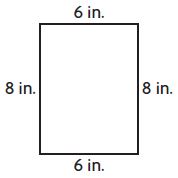
Options:
a. 14 inches
b. 26 inches
c. 28 inches
d. 48 inches
Answer: 28 inches
Explanation:
Given,
l = 6 in
w = 8 in.
Perimeter of the rectangle = l + l + w + w
P = 6 in + 6 in + 8 in + 8 in
P = 28 inches
Thus the perimeter of the rectangle is 28 inches.
The correct answer is option C.
Question 5.
A website had 826,140 hits last month. What is the value of the 8 in 826,140?
Options:
a. 800
b. 8,000
c. 80,000
d. 800,000
Answer: 800,000
Explanation:
A website had 826,140 hits last month.
The value of the 8 in 826,140 is 800,000.
Thus the correct answer is option D.
Question 6.
Which is 680,705 written in expanded form?
Options:
a. 680 + 705
b. 68,000 + 700 + 5
c. 600,000 + 8,000 + 700 + 5
d. 600,000 + 80,000 + 700 + 5
Answer: 600,000 + 80,000 + 700 + 5
Explanation:
The expanded form of 680,705 is 600,000 + 80,000 + 700 + 5
The correct answer is option D.
Common Core – Place Value, Addition, and Subtraction to One Million – Page No. 9
Round Numbers
Round to the place value of the underlined digit.
Question 1.

Look at the digit to the right. If the digit to the right is less than 5, the digit in the rounding place stays the same.
Change all the digits to the right of the rounding place to zero.
Question 2.
123,499
_____
Answer: 123,000
Explanation:
Look at the digit to the right. If the digit to the right is less than 5, the digit in the rounding place stays the same.
Change all the digits to the right of the rounding place to zero.
The place value of 3 in 123,499 is 123,000.
Question 3.
552,945
_____
Answer: 600,000
Explanation:
Look at the digit to the right. If the digit to the right is less than 5, the digit in the rounding place stays the same.
Change all the digits to the right of the rounding place to zero.
The place value of 5 in 552,945 is 600,000.
Question 4.
389,422
_____
Answer: 390,000
Explanation:
Look at the digit to the right. If the digit to the right is less than 5, the digit in the rounding place stays the same.
Change all the digits to the right of the rounding place to zero.
The place value of 8 in 389,422 is 390,000.
Question 5.
209,767
_____
Answer: 200,000
Explanation:
Look at the digit to the right. If the digit to the right is less than 5, the digit in the rounding place stays the same.
Change all the digits to the right of the rounding place to zero.
The place value of 2 in 209,767 is 200,000.
Question 6.
191,306
_____
Answer: 191,000
Explanation:
Look at the digit to the right. If the digit to the right is less than 5, the digit in the rounding place stays the same.
Change all the digits to the right of the rounding place to zero.
The place value of 1 in 191,306 is 191,000.
Question 7.
66,098
_____
Answer: 70,000
Explanation:
Look at the digit to the right. If the digit to the right is less than 5, the digit in the rounding place stays the same.
Change all the digits to the right of the rounding place to zero.
The place value of 6 in 66,098 is 70,000.
Question 8.
73,590
_____
Answer: 74,000
Explanation:
Look at the digit to the right. If the digit to the right is less than 5, the digit in the rounding place stays the same.
Change all the digits to the right of the rounding place to zero.
The place value of 3 in 73,590 is 74,000.
Question 9.
149,903
_____
Answer: 100,000
Explanation:
Look at the digit to the right. If the digit to the right is less than 5, the digit in the rounding place stays the same.
Change all the digits to the right of the rounding place to zero.
The place value of 1 in 149,903 is 100,000.
Question 10.
684,303
_____
Answer: 684,000
Explanation:
Look at the digit to the right. If the digit to the right is less than 5, the digit in the rounding place stays the same.
Change all the digits to the right of the rounding place to zero.
The place value of 4 in 684,303 is 684,000.
Question 11.
499,553
_____
Answer: 500,000
Explanation:
Look at the digit to the right. If the digit to the right is less than 5, the digit in the rounding place stays the same.
Change all the digits to the right of the rounding place to zero.
The place value of 9 in 499,553 is 500,000.
Problem Solving
Use the table for 12–13.
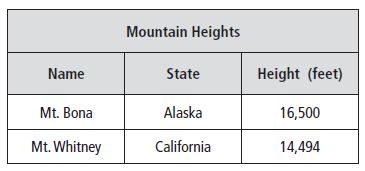
Question 12.
Find the height of Mt. Whitney in the table. Round the height to the nearest thousand feet.
_____ feet
Answer: 14,000 feet
Explanation:
The height to the nearest thousand feet for 14,494 is 14,000 feet.
Question 13.
What is the height of Mt. Bona rounded to the nearest ten thousand feet?
_____ feet
Answer: 20,000 feet
Explanation:
The height of Mt. Bona rounded to the nearest ten thousand feet for 16,500 is 20,000 feet.
Common Core – Place Value, Addition, and Subtraction to One Million – Page No. 10
Lesson Check
Question 1.
Which number is 247,039 rounded to the nearest thousand?
Options:
a. 200,000
b. 250,000
c. 247,000
d. 7,000
Answer: 247,000
Explanation:
Round off the value means making a number simpler but keeping its value close to what it was. The result is less accurate but easy to use. So the number is 247,039 rounded to the nearest thousand is 247,000.
Thus the correct answer is option C.
Question 2.
To the nearest ten thousand, the population of Vermont was estimated to be about 620,000 in 2008. Which might have been the exact population of Vermont in 2008?
Options:
a. 626,013
b. 621,270
c. 614,995
d. 609,964
Answer: 621,270
Explanation:
To the nearest ten thousand, the population of Vermont was estimated to be about 620,000 in 2008.
The exact population of Vermont in 2008 might be 621,270.
Thus the correct answer is option B.
Spiral Review
Question 3.
Which symbol makes the following number sentence true?
$546,322 Ο $540,997
Options:
a. <
b. >
c. =
d. +
Answer: >
Explanation:
$546,322 is greater than $540,997.
Thus the correct answer is option B.
Question 4.
Pittsburgh International Airport had approximately 714,587 passengers in August 2009. Which number is greater than 714,587?
Options:
a. 714,578
b. 704,988
c. 714,601
d. 714,099
Answer: 714,601
Explanation:
Given,
Pittsburgh International Airport had approximately 714,587 passengers in August 2009.
The number greater than 714,587 is 714,601.
Thus the correct answer is option C.
Question 5.
June made a design with 6 equal tiles. One tile is yellow, 2 tiles are blue, and 3 tiles are purple. What fraction of the tiles are yellow or purple?
Options:
a. \(\frac{1}{6}\)
b. \(\frac{2}{6}\)
c. \(\frac{3}{6}\)
d. \(\frac{4}{6}\)
Answer: \(\frac{4}{6}\)
Explanation:
Given,
June made a design with 6 equal tiles. One tile is yellow, 2 tiles are blue, and 3 tiles are purple.
We have to put the total number of tiles in the denominator.
The number of yellow or purple tiles is 3 + 1 = 4 put it in the numerator.
The fraction of the tiles are yellow or purple is \(\frac{4}{6}\).
Thus the correct answer is option D.
Question 6.
The fourth grade collected 40,583 cans and plastic bottles. Which of the following shows that number in word form?
Options:
a. forty thousand, five hundred eighty
b. forty thousand, five hundred eighty-three
c. four thousand, five hundred eighty-three
d. four hundred thousand, five hundred eighty
Answer: forty thousand, five hundred eighty-three
Explanation:
Given,
The fourth grade collected 40,583 cans and plastic bottles.
The expanded form of 40,583 is forty thousand, five hundred eighty-three.
Thus the correct answer is option B.
Common Core – Place Value, Addition, and Subtraction to One Million – Page No. 11
Rename Numbers
Rename the number. Use the place-value chart to help.
Question 1.
760 hundreds = 76,000

Question 2.
805 tens = ________
| THOUSANDS |
ONES |
| Hundreds |
Tens |
Ones |
Hundreds |
Tens |
Ones |
|
|
_________ |
_________ |
_________ |
_________ |
Answer:
| THOUSANDS |
ONES |
| Hundreds |
Tens |
Ones |
Hundreds |
Tens |
Ones |
|
|
8 |
0 |
5 |
0 |
Question 3.
24 ten thousands = ________
| THOUSANDS |
ONES |
| Hundreds |
Tens |
Ones |
Hundreds |
Tens |
Ones |
| _________ |
_________ |
_________ |
_________ |
_________ |
_________ |
Answer:
| THOUSANDS |
ONES |
| Hundreds |
Tens |
Ones |
Hundreds |
Tens |
Ones |
| 2 |
4 |
0 |
0 |
0 |
0 |
Rename the number.
Question 4.
720 = ____ tens
Answer: 72
Explanation:
720 can be calculated as 72 × 10 = 72 tens.
Question 5.
4 thousands 7 hundreds = 47 ________
Answer: hundreds
Explanation:
4 thousands 7 hundreds
4700 = 47 × 100 = 47 hundreds
Question 6.
25,600 = ____ hundreds
Answer: 256
Explanation:
25,600 = 256 × 100 = 256 hundreds
Question 7.
204 thousands = ____
Answer: 204,000
Explanation:
204 thousands = 204 × 1000 = 204,000.
Problem Solving
Question 8.
For the fair, the organizers ordered 32 rolls of tickets. Each roll of tickets has 100 tickets. How many tickets were ordered in all?
____ tickets
Answer: 3,200 tickets
Explanation:
Given,
For the fair, the organizers ordered 32 rolls of tickets. Each roll of tickets has 100 tickets.
32 × 100 tickets = 3200 tickets
Therefore 3200 tickets were ordered in all.
Question 9.
An apple orchard sells apples in bags of 10. The orchard sold a total of 2,430 apples one day. How many bags of apples was this?
____ bags
Answer: 243 bags
Explanation:
Given,
An apple orchard sells apples in bags of 10. The orchard sold a total of 2,430 apples one day.
2430/10 = 243 bags
There were 243 bags of apples.
Question 10.
Explain how you can rename 5,400 as hundreds. Include a quick picture or a place-value chart in your explanation.
____ hundreds
Answer: 54
Explanation:
It would be 54 hundreds because:
In 5400 there are 2 zeros
Also in 100, there are 2 zeros
2 zeros equals a hundred
100=1 hundred, because it has a 1 in front of the 2 zeros
5400=54 hundreds, because it has a 54 in front of the 2 zeros
Common Core – Place Value, Addition, and Subtraction to One Million – Page No. 12
Lesson Check
Question 1.
A dime has the same value as 10 pennies. Marley brought 290 pennies to the bank. How many dimes did Marley get?
Options:
a. 29
b. 290
c. 2,900
d. 29,000
Answer: 29
Explanation:
Given,
A dime has the same value as 10 pennies. Marley brought 290 pennies to the bank.
To find How many dimes did Marley get we have to divide 290 pennies by 10 pennies.
290/10 = 29
Therefore Marley gets 29 pennies.
Thus the correct answer is option a.
Question 2.
A citrus grower ships grapefruit in boxes of 10. One season, the grower shipped 20,400 boxes of grapefruit. How many grapefruit were shipped?
Options:
a. 204
b. 2,040
c. 20,400
d. 204,000
Answer: 204,000
Explanation:
Given,
A citrus grower ships grapefruit in boxes of 10.
One season, the grower shipped 20,400 boxes of grapefruit.
We need to find How many grapefruit were shipped.
Multiply 20,400 boxes with 10.
20,400 × 10 = 204,000
Therefore 204,000 grapefruit were shipped.
Thus the correct answer is option d.
Spiral Review
Question 3.
There were 2,605 people at the basketball game. A reporter rounded this number to the nearest hundred for a newspaper article. What number did the reporter use?
Options:
a. 2,600
b. 2,610
c. 2,700
d. 3,000
Answer: 2,600
Explanation:
Given,
There were 2,605 people at the basketball game. A reporter rounded this number to the nearest hundred for a newspaper article.
To find:
What number did the reporter use?
The number 2605 nearest to the hundred is 2600.
Thus the correct answer is option a.
Question 4.
To get to Level 3 in a game, a player must score 14,175 points. Ann scores 14,205 points, Ben scores 14,089 points, and Chuck scores 10,463 points. Which score is greater than the Level 3 score?
Options:
a. 14,205
b. 14,175
c. 14,089
d. 10,463
Answer: 14,205
Explanation:
Given,
To get to Level 3 in a game, a player must score 14,175 points. Ann scores 14,205 points, Ben scores 14,089 points, and Chuck scores 10,463 points.
By seeing the above points we can say that 14,205 is greater than level 3.
Thus the correct answer is option a.
Question 5.
Henry counted 350 lockers in his school. Hayley counted 403 lockers in her school. Which statement is true?
Options:
a. The 3 in 350 is 10 times the value of the 3 in 403.
b. The 3 in 350 is 100 times the value of the 3 in 403.
c. The 3 in 403 is 10 times the value of the 3 in 350.
d. The 3 in 403 is 100 times the value of the 3 in 350.
Answer: The 3 in 350 is 100 times the value of the 3 in 403.
Explanation:
Given,
Henry counted 350 lockers in his school. Hayley counted 403 lockers in her school.
The statement “The 3 in 350 is 100 times the value of the 3 in 403” is true.
Thus the correct answer is option b.
Question 6.
There are 4 muffins on each plate. There are 0 plates of lemon muffins. How many lemon muffins are there?
Options:
a. 4
b. 2
c. 1
d. 0
Answer: 0
Explanation:
Given,
There are 4 muffins on each plate. There are 0 plates of lemon muffins.
Multiply the number of muffins with the number of plates.
4 × 0 = 0
There are 0 lemon muffins.
Thus the correct answer is option d.
Common Core – Place Value, Addition, and Subtraction to One Million – Page No. 13
Add Whole Numbers
Estimate. Then find the sum.
Question 1.
Estimate: 90,000
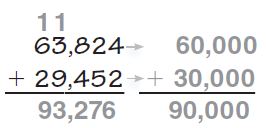
Question 2.
73,404
+ 27,865
————
Estimate: _______
Sum: _______
Answer:
Estimate: 100,000
Sum: 101,269
Estimate:
The number rounded to 73,404 is 70,000.
The number rounded to 27,865 is 30,000.
70,000
+30,000
100,000
Sum:
73,404
+ 27,865
101,269
Question 3.
404,446
+ 396,755
————
Estimate: _______
Sum: _______
Answer:
Estimate: 800,000
Sum: 800,201
Estimate:
The number rounded to 400,000
The number rounded to 400,000
400,000
+400,000
800,000
Sum:
404,446
+ 396,755
800,201
Question 4.
137,638
+ 52,091
————
Estimate: _______
Sum: _______
Answer:
Estimate: 200,000
Sum: 189,729
Estimate:
The number rounded to 150,000
The number rounded to 50,000
150,000
+50,000
200,000
Sum:
137,638
+ 52,091
189,729
Question 5.
200,629
+ 28,542
————
Estimate: _______
Sum: _______
Answer:
Estimate: 250,000
Sum: 229,171
Estimate:
The number rounded to 200,000
The number rounded to 50,000
200,000
+50,000
250,000
Sum:
200,629
+ 28,542
229,171
Question 6.
212,514
+ 396,705
————
Estimate: _______
Sum: _______
Answer:
Estimate: 600,000
Sum: 609,219
Estimate:
The number rounded to 200,000
The number rounded to 400,000
200,000
+400,000
600,000
Sum:
212,514
+ 396,705
609,219
Question 7.
324,867
+ 6,233
————
Estimate: _______
Sum: _______
Answer:
Estimate: 330,000
Sum: 331,100
Estimate:
The number rounded to 324,000
The number rounded to 6,000
324,000
+ 6,000
330,000
Sum:
324,867
+ 6,233
331,100
Question 8.
462,809
+ 256,738
————
Estimate: _______
Sum: _______
Answer:
Estimate: 800,000
Sum: 719,547
Estimate:
The number rounded to 500,000
The number rounded to 300,000
500,000
+300,000
800,000
Sum:
462,809
+ 256,738
719,547
Question 9.
624,836
+ 282,189
————
Estimate: _______
Sum: _______
Answer:
Estimate: 900,000
Sum: 907,025
Estimate:
The number rounded to 600,000
The number rounded to 300,000
600,000
+300,000
900,000
Sum:
624,836
+ 282,189
907,025
Problem Solving
Use the table for 10–12.
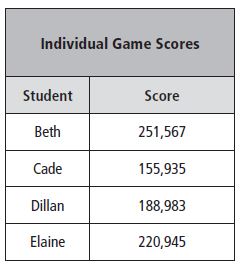
Question 10.
Beth and Cade were on one team. What was their total score?
______
Answer: 407,502
Explanation:
The score of Beth is 251,567
The score of Cade is 155,935
251,567
+155,935
407,502
Thus the total score of Beth and Cade is 407,502.
Question 11.
Dillan and Elaine were on the other team. What was their total score?
______
Answer: 409,928
Explanation:
The score of Dillan is 188,983
The score of Elaine is 220,945
188,983
+220,945
409,928
The total score of Dillan and Elaine is 409,928.
Question 12.
Which team scored the most points?
_________
Answer: Dillan and Elaine
The total score of Dillan and Elaine is 409,928.
The total score of Beth and Cade is 407,502.
409,928
-407,502
002,226
Thus Dillan and Elaine team scored the most points.
Common Core – Place Value, Addition, and Subtraction to One Million – Page No. 14
Lesson Check
Question 1.
The coastline of the United States is 12,383 miles long. Canada’s coastline is 113,211 miles longer than the coastline of the United States. How long is the coastline of Canada?
Options:
a. 100,828 miles
b. 115,594 miles
c. 125,594 miles
d. 237,041 miles
Answer: 125,594 miles
Explanation:
Given,
The coastline of the United States is 12,383 miles long.
Canada’s coastline is 113,211 miles longer than the coastline of the United States.
113,211
+12,383
125,594
Therefore, the coastline of Canada is 125,594 miles.
Thus the correct answer is option c.
Question 2.
Germany is the seventh largest European country and is slightly smaller by area than Montana. Germany has a land area of 134,835 square miles and a water area of 3,011 square miles. What is the total area of Germany?
Options:
a. 7,846 square miles
b. 131,824 square miles
c. 137,846 square miles
d. 435,935 square miles
Answer: 137,846 square miles
Explanation:
Given,
Germany is the seventh largest European country and is slightly smaller by area than Montana. Germany has a land area of 134,835 square miles and a water area of 3,011 square miles.
134,835
+ 3,011
137,846
Therefore the total area of Germany is 137,846 square miles.
Thus the correct answer is option c.
Spiral Review
Question 3.
In an election, about 500,000 people voted in all. Which number could be the exact number of people who voted in the election?
Options:
a. 429,455
b. 441,689
c. 533,736
d. 550,198
Answer: 533,736
Explanation:
Given,
In an election, about 500,000 people voted in all.
The number near to 500,000 is 533,736.
Thus the correct answer is option c.
Question 4.
In 2007, Pennsylvania had approximately 121,580 miles of public roads. What is 121,580 rounded to the nearest thousand?
Options:
a. 100,000
b. 120,000
c. 121,000
d. 122,000
Answer: 122,000
Explanation:
Given,
In 2007, Pennsylvania had approximately 121,580 miles of public roads.
121,580 rounded to the nearest thousand is 122,000.
Thus the correct answer is option d.
Question 5.
Which of the following lists of numbers is in order from greatest to least?
Options:
a. 33,093; 33,903; 33,309
b. 42,539; 24,995; 43,539
c. 682,131; 628,000; 682,129
d. 749,340; 740,999; 740,256
Answer: 749,340; 740,999; 740,256
Explanation:
a. 33,093; 33,903; 33,309
33,093 = 33,903 = 33,309
b. 42,539; 24,995; 43,539
42,539 > 24,995 < 43,539
c. 682,131; 628,000; 682,129
682,131 > 628,000 < 682,129
d. 749,340; 740,999; 740,256
749,340 > 740,999 > 740,256
Thus the correct answer is option d.
Question 6.
Which symbol makes the following statement true?
$413,115  $431,511
$431,511
Options:
a. <
b. >
c. =
d. +
Answer: <
Explanation:
The number $413,115 is less than $431,511
$413,115 < $431,511
Thus the correct answer is option a.
Common Core – Place Value, Addition, and Subtraction to One Million – Page No. 15
Subtract Whole Numbers
Estimate. Then find the difference.
Question 1.

Question 2.
428,731
– 175,842
————-
Estimate: _______
Difference: _______
Answer:
Estimate: 200,000
Difference: 252,889
Estimate:
The number rounded to 428,731 is 400,000
The number rounded to 175,842 is 200,000
400,000
-200,000
200,000
Difference:
428,731
– 175,842
252,889
Question 3.
920,026
– 535,722
————-
Estimate: _______
Difference: _______
Answer:
Estimate: 400,000
Difference: 384,304
Estimate:
The number rounded to 920,026 is 900,000
The number rounded to 535,722 is 500,000
900,000
-500,000
400,000
Difference:
920,026
– 535,722
384,304
Question 4.
253,495
– 48,617
————-
Estimate: _______
Difference: _______
Answer:
Estimate: 200,000
Difference: 204,878
Estimate:
The number rounded to 253,495 is 250,000
The number rounded to 48,617 is 50,000
Subtract. Add to check.
Question 5.
735,249 – 575,388 = ______
______ + ______ = ______
Answer: 159,861
735,249
-575,388
159,861
Now check whether the answer is correct or wrong.
159,861
+575,388
735,249
Question 6.
512,724 – 96,473 = ______
______ + ______ = ______
Answer: 416,251
512,724
-96,473
416,251
Now check whether the answer is correct or wrong.
416,251
96,473
512,724
Question 7.
600,000 – 145,782 = ______
______ + ______ = ______
Answer: 454,218
600,000
-145,782
454,218
Now check whether the answer is correct or wrong.
454,218
+145,782
600,000
Problem Solving
Use the table for 8 and 9.

Question 8.
How many more people attended the Magic’s games than attended the Pacers’ games?
______ people
Answer: 133,606
Explanation:
Number of people attended Magic’s games = 715,901
Number of people attended Pacers’ games = 582,295
To find:
How many more people attended the Magic’s games than attended the Pacers’ games
We need to subtract the Number of people attended Pacers’ games from the Number of people attended Magic’s games
715,901
-582,295
133,606
Question 9.
How many fewer people attended the Pacers’ games than attended the Clippers’ games?
______ people
Answer: 87,768
Explanation:
Number of people attended Pacers’ games = 582,295
Number of people attended Clippers’ games = 670,063
To find:
How many fewer people attended the Pacers’ games than attended the Clippers’ games
We need to subtract the number of people attended Pacers’ games from the Number of people attended Clippers’ games
670,063
-582,295
87,768
Common Core – Place Value, Addition, and Subtraction to One Million – Page No. 16
Lesson Check
Question 1.
This year, a farm planted 400,000 corn stalks. Last year, the farm planted 275,650 corn stalks. How many more corn stalks did the farm plant this year than last year?
Options:
a. 124,350
b. 125,450
c. 235,450
d. 275,650
Answer: 124,350
Explanation:
Given,
This year, a farm planted 400,000 corn stalks.
Last year, the farm planted 275,650 corn stalks.
400,000
-275,650
124,350
Thus the correct answer is option a.
Question 2.
One machine can make 138,800 small paper clips in one day. Another machine can make 84,250 large paper clips in one day. How many more small paper clips than large paper clips are made by the two machines in one day?
Options:
a. 44,550
b. 54,550
c. 54,650
d. 154,650
Answer: 54,550
Explanation:
Given,
One machine can make 138,800 small paper clips in one day.
Another machine can make 84,250 large paper clips in one day
138,800
-84,250
54,550
Thus the correct answer is option b.
Spiral Review
Question 3.
In three baseball games over a weekend, 125,429 people came to watch. The next weekend, 86,353 came to watch the games. How many people in all watched
the six baseball games?
Options:
a. 201,782
b. 211,772
c. 211,782
d. 211,882
Answer: 211,782
Explanation:
Given,
In three baseball games over a weekend, 125,429 people came to watch.
The next weekend, 86,353 came to watch the games.
125,429
+86,353
211,782
Thus the correct answer is option c.
Question 4.
Kevin read the number “two hundred seven thousand, forty-eight” in a book. What is this number in standard form?
Options:
a. 27,048
b. 27,480
c. 207,048
d. 207,480
Answer: 207,048
Explanation:
Given,
Kevin read the number “two hundred seven thousand, forty-eight” in a book.
The standard form of two hundred seven thousand, forty-eight is 207,048.
Thus the correct answer is option c.
Question 5.
A museum had 275,608 visitors last year. What is this number rounded to the nearest thousand?
Options:
a. 275,600
b. 276,000
c. 280,000
d. 300,000
Answer: 276,000
Explanation:
A museum had 275,608 visitors last year.
The number 275,608 rounded to the nearest thousand is 276,000
Thus the correct answer is option b.
Question 6.
At the Millville Theater, a play ran for several weeks. In all, 28,175 people saw the play. What is the value of the digit 8 in 28,175?
Options:
a. 8
b. 800
c. 8,000
d. 80,000
Answer: 8,000
Explanation:
At the Millville Theater, a play ran for several weeks. In all, 28,175 people saw the play.
Every digit in a number has a place value and the place value can be defined as the value represented by a digit in a number on the basis of its position in the number. So the place value of the digit 8 in 28,175 is 8000.
Thus the correct answer is option c.
Common Core – Place Value, Addition, and Subtraction to One Million – Page No. 17
Problem Solving Comparison Problems with Addition and Substraction
Use the information in the table for 1–3.
Question 1.
How many square miles larger is the surface area of Lake Huron than the surface area of Lake Erie?
Think: How can a bar model help represent the problem? What equation can be written?
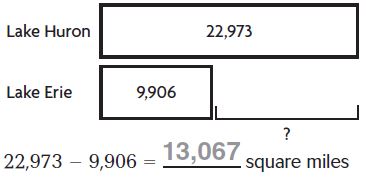
Question 1.

Question 2.
Which lake has a surface area that is 14,938 square miles greater than the surface area of Lake Ontario? Draw a model and write a number sentence to solve the problem.
_________
Answer:
Explanation:
The surface area of Lake Ontario is 7,340 square miles.
14,938
+7,340
22,278 square miles
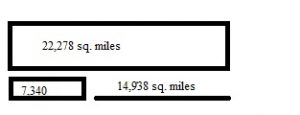
Question 3.
Lake Victoria has the largest surface area of all lakes in Africa. Its surface area is 26,828 square miles. How much larger is the surface area of Lake Superior than that of Lake Victoria?
_____ square milles
Answer: 4,872 square miles
Explanation:
The surface area of Lake Victoria is 26,828 square miles.
The surface area of Lake Superior is 31,700 square miles.
31,700
-26,828
04,872
The surface area of Lake Superior is 4,872 square miles larger than Lake Victoria.
Question 4.
At 840,000 square miles, Greenland is the largest island in the world. The second-largest island is New Guinea, at 306,000 square miles. How much larger is Greenland than New Guinea?
_____ square milles
Answer: 534,000 square miles
Explanation:
Given,
At 840,000 square miles, Greenland is the largest island in the world.
The second-largest island is New Guinea, at 306,000 square miles.
840,000
-306,000
534,000
Greenland is 534,000 square miles larger than New Guinea.
Common Core – Place Value, Addition, and Subtraction to One Million – Page No. 18
Lesson Check
Question 1.
The Mariana Trench in the Pacific Ocean is about 36,201 feet deep. The Puerto Rico Trench in the Atlantic Ocean is about 27,493 feet deep. Based on these data, how many feet deeper is the Mariana Trench than the Puerto Rico Trench?
Options:
a. 8,708 feet
b. 9,718 feet
c. 9,808 feet
d. 63,694 feet
Answer: 8,708 feet
Explanation:
Given,
The Mariana Trench in the Pacific Ocean is about 36,201 feet deep.
The Puerto Rico Trench in the Atlantic Ocean is about 27,493 feet deep.
36,201
-27,493
08,708 feet
Mariana Trench is 8708 feet deeper than the Puerto Rico Trench.
Thus the correct answer is option a.
Question 2.
At 1,932 feet, Crater Lake, Oregon, is the deepest lake in the United States. The world’s deepest lake, Lake Baykal in Russia, is 3,383 feet deeper. How deep is Lake Baykal?
Options:
a. 3,383 feet
b. 4,215 feet
c. 4,315 feet
d. 5,315 feet
Answer: 5,315 feet
Explanation:
At 1,932 feet, Crater Lake, Oregon, is the deepest lake in the United States.
The world’s deepest lake, Lake Baykal in Russia, is 3,383 feet deeper.
3383
+1932
5315
Thus the correct answer is option d.
Spiral Review
Question 3.
Which of the following amounts is greater than $832,458?
Options:
a. $82,845
b. $832,458
c. $823,845
d. $832,485
Answer: $832,485
Explanation:
We have to compare all the options with $832,458
a. $82,845 < $832,458
b. $832,458 = $832,458
c. $823,845 < $832,458
d. $832,485 > $832,458
Thus the correct answer is option d.
Question 4.
A stadium in Pennsylvania seats 107,282 people. A stadium in Arizona seats 71,706 people. Based on these facts, how many more people does the stadium in Pennsylvania seat than the stadium in Arizona?
Options:
a. 35,576
b. 35,586
c. 36,576
d. 178,988
Answer: 35,576
Explanation:
Given,
A stadium in Pennsylvania seats 107,282 people. A stadium in Arizona seats 71,706 people.
107,282
-71,706
35,576
Thus the correct answer is option a.
Question 5.
Which of the following numbers is 399,713 rounded to the place value of the underlined digit?
Options:
a. 390,000
b. 398,000
c. 399,800
d. 400,000
Answer: 400,000
Explanation:
The number 399,713 rounded to the place value of the underlined digit is 400,000.
Thus the correct answer is option d.
Question 6.
About 400,000 people visited an art museum in December. Which number could be the exact number of people who visited the art museum?
Options:
a. 478,051
b. 452,223
c. 352,483
d. 348,998
Answer: 352,483
Explanation:
About 400,000 people visited an art museum in December.
The number that could be the exact number of people who visited the art museum is 352,483.
Thus the correct answer is option c.
Common Core – Place Value, Addition, and Subtraction to One Million – Page No. 19
Lesson 1.1
Find the value of the underlined digit.
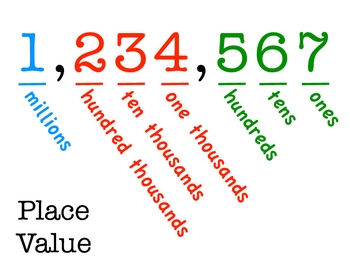
Question 1.
6,493
____
Answer: 90
Explanation:
Every digit in a number has a place value and the place value can be defined as the value represented by a digit in a number on the basis of its position in the number. So the place value of the digit 9 in 6,493 is 90.
Question 2.
16,403
____
Answer: 10,000
Explanation:
Every digit in a number has a place value and the place value can be defined as the value represented by a digit in a number on the basis of its position in the number. So the place value of the digit 1 in 16,403 is 10,000.
Question 3.
725,360
____
Answer: 300
Explanation:
Every digit in a number has a place value and the place value can be defined as the value represented by a digit in a number on the basis of its position in the number. So the place value of the digit 3 in 725,360 is 300.
Question 4.
952,635
____
Answer: 900,000
Explanation:
Every digit in a number has a place value and the place value can be defined as the value represented by a digit in a number on the basis of its position in the number. So the place value of the digit 9 in 952,635 is 900,000.
Compare the values of the underlined digits in 46,395 and 14,906.
Question 5.
The value of 4 in ____ is ____ times the value of 4 in ____.
Answer: The value of 4 in 46,395 is 10 times the value of 4 in 14,906.
Explanation:
Every digit in a number has a place value and the place value can be defined as the value represented by a digit in a number on the basis of its position in the number. So the place value of the digit 4 in 46,395 is 40,000. And the place value of the digit 4 in 14,906 is 4,000. So, the value of 4 in 46,395 is 10 times the value of 4 in 14,906.
Lesson 1.2
Read and write the number in two other forms.
Question 6.
304,001
word form: _______
expanded form: _______
Answer:
word form: three hundred four thousand one
expanded form: 300,000 + 4000 + 1
Explanation:
Convert the number 304,001 into the word form three hundred four thousand one.
The expanded form of 304,001 is 300,000 + 4000 + 1
Question 7.
two hundred eight thousand, five hundred sixty-one
standard form: _______
_______
Answer:
The standard form of two hundred eight thousand, five hundred sixty-one is 208,561.
The expanded form of 208,561 is 200,000 + 8,000 + 500 + 60 + 1
Use the number 751,486.
Question 8.
Write the name of the period that has the digits 486.
_________
Answer: The name of the period that has the digits 486 is Ones.
Question 9.
Write the name of the period that has the digits 751.
_________
Answer: The name of the period that has the digits 751 is thousands.
Question 10.
Write the digit in the thousands place.
The digit in the thousands place: ____
Answer: The digit in the thousands place is 1.
Question 11.
Write the value of the digit 5.
____
Answer: The value of the digit 5 in 751,486 is 50,000.
Lesson 1.3
Compare. Write <, >, or =.
Question 12.
6,930 ____ 7,023
Answer: <
Explanation:
The number 6,930 is less than 7,023
6,930 < 7,023
Question 13.
98,903 ____ 98,930
Answer: <
Explanation:
The number 98,903 is less than 98,930
98,903 < 98,930
Question 14.
549,295 ____ 547,364
Answer: >
Explanation:
The number 549,295 is greater than 547,364
549,295 > 547,364
Order from least to greatest.
Question 15.
$26,940; $25,949; $26,490
Options:
a. $25,949; $26,490; $26,940
b. $26,490; $25,949; $26,940
c. $26,940; $25,949; $26,490
Answer: $25,949; $26,490; $26,940
Explanation:
We have to write the numbers from the least to the greatest.
$25,949 < $26,490 < $26,940
The order from the least to the greatest is $25,949; $26,490; $26,940
Thus the correct answer is option a.
Question 16.
634,943; 639,443; 589,932
Options:
a. 639,443; 589,932; 634,943
b. 634,943; 639,443; 589,932
c. 589,932; 634,943; 639,443
Answer: 589,932; 634,943; 639,443
Explanation:
We have to write the numbers from the least to the greatest.
589,932 < 634,943 < 639,443
The order from the least to the greatest is 589,932; 634,943; 639,443
Thus the correct answer is option c.
Common Core – Place Value, Addition, and Subtraction to One Million – Page No. 20
Lesson 1.4
Round to the place value of the underlined digit.
Question 1.
286,476
____
Answer: 286,000
Explanation:
Look at the digit to the right. If the digit to the right is less than 5, the digit in the rounding place stays the same.
Change all the digits to the right of the rounding place to zero.
The place value of 6 in 286,476 is 286,000.
Question 2.
289,342
____
Answer: 289,000
Explanation:
Look at the digit to the right. If the digit to the right is less than 5, the digit in the rounding place stays the same.
Change all the digits to the right of the rounding place to zero.
The place value of 9 in 289,342 is 289,000.
Question 3.
245,001
____
Answer: 250,000
Explanation:
Look at the digit to the right. If the digit to the right is less than 5, the digit in the rounding place stays the same.
Change all the digits to the right of the rounding place to zero.
The place value of 4 in 245,001 is 250,000.
Question 4.
183,002
____
Answer: 200,000
Explanation:
Look at the digit to the right. If the digit to the right is less than 5, the digit in the rounding place stays the same.
Change all the digits to the right of the rounding place to zero.
The place value of 1 in 183,002 is 200,000.
Lesson 1.5
Rename the number.
Question 5.
82 thousands = ____
Answer: 82,000
Explanation:
82 thousands = 82 × 1000 = 82,000.
Question 6.
600,000 = ____ ten thousands
Answer: 60
Explanation:
600,000 = 60 × 10000
60 × 10000 = 60 ten thousands
Question 7.
9,200 = ____ hundreds
Answer: 92
Explanation:
9,200 = 92 × 100 = 92 hundreds
Question 8.
8 ten thousands 4 hundreds = ____
Answer: 80,400
Explanation:
8 ten thousands 4 hundreds
8 × 10,000 + 4 × 100 = 80,000 + 400 = 80,400
Lesson 1.6
Estimate. Then find the sum.
Question 9.
94,903
+ 49,995
————
Estimate: ________
Sum: ________
Answer:
Estimate: 140000
Sum: 144898
Explanation:
Estimate:
The number rounded to 94,903 is 90,000
The number rounded to 49,995 is 50,000
90,000
+50,000
140,000
Sum:
94,903
+ 49,995
144,898
Question 10.
420,983
+ 39,932
————
Estimate: ________
Sum: ________
Answer:
Estimate: 460,000
Sum: 460915
Explanation:
Estimate:
The number rounded to 420,983 is 420,000
The number rounded to 39,932 is 40,000
420,000
+40,000
460,000
Sum:
420,983
+39,932
460,915
Question 11.
540,943
+ 382,093
————
Estimate: ________
Sum: ________
Answer:
Estimate: 940,000
Sum: 923036
Explanation:
Estimate:
The number rounded to 540,943 is 540,000
The number rounded to 382,093 is 400,000
540,000
+400,000
940,000
Sum:
540,943
+ 382,093
923,036
Lesson 1.7
Estimate. Then find the difference.
Question 12.
25,953
– 9,745
————
Estimate: ________
Difference: ________
Answer:
Estimate: 15,000
Difference: 16,208
Explanation:
Estimate:
The number rounded to 25,953 is 25,000
The number rounded to 9,745 is 10,000.
25,000
-10,000
15,000
Difference:
25,953
– 9,745
16,208
Question 13.
740,758
– 263,043
————
Estimate: ________
Difference: ________
Answer:
Estimate: 450,000
Difference: 477715
Explanation:
Estimate:
The number rounded to 740,758 is 750,000
The number rounded to 263,043 is 300,000
750,000
-300,000
450,000
Difference:
740,758
– 263,043
477,715
Question 14.
807,632
– 592,339
————
Estimate: ________
Difference: ________
Answer:
Estimate: 200,000
Difference: 215293
Explanation:
Estimate:
The number rounded to 807,632 is 800,000
The number rounded to 592,339 is 600,000
800,000
-600,000
200,000
Difference:
807,632
– 592,339
215293
Lesson 1.8
Question 15.
The attendance for the first game of the football season was 93,584. The attendance for the second game was 104,227. How many more people attended the second game than the first game?
______ people
Answer: 10643 people
Explanation:
Given,
The attendance for the first game of the football season was 93,584.
The attendance for the second game was 104,227.
104,227
-93,584
10,643
Thus, 10,643 more people attended the second game than the first game.
Question 16.
Abby and Lee sold raffle tickets to raise money for a new playground. Abby sold 1,052 tickets. Lee sold 379 more tickets than Abby. How many tickets did Lee sell?
______ tickets
Answer: 1431 tickets
Explanation:
Given,
Abby and Lee sold raffle tickets to raise money for a new playground.
Abby sold 1,052 tickets. Lee sold 379 more tickets than Abby.
1,052
+379
1431
Therefore, Lee sell 1431 tickets.
Conclusion
All these solutions explained in the Go Math Grade 4 Answer Key Homework Practice FL Chapter 1 Place Value, Addition, and Subtraction to One Million are easy to understand. Check out HMH Go Math Grade 4 Chapter 1 Solution Key to score good grades in the exams. For any queries go through the exercise problems of Go Math Grade 4 Answer Key Chapter 1 Place Value, Addition, and Subtraction to One Million pdf.
